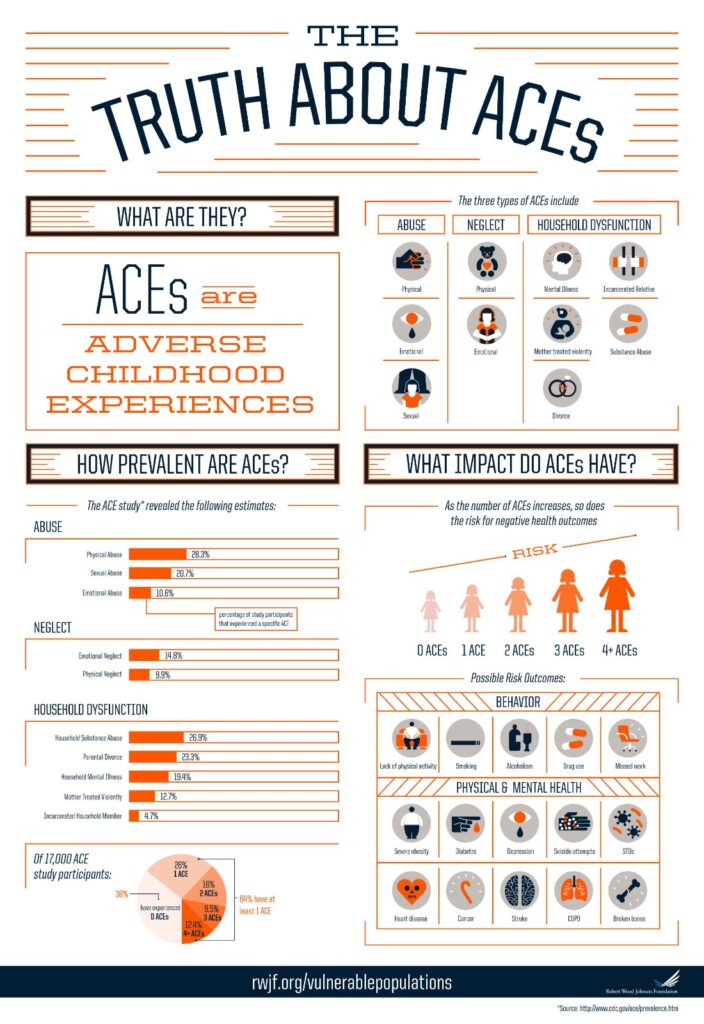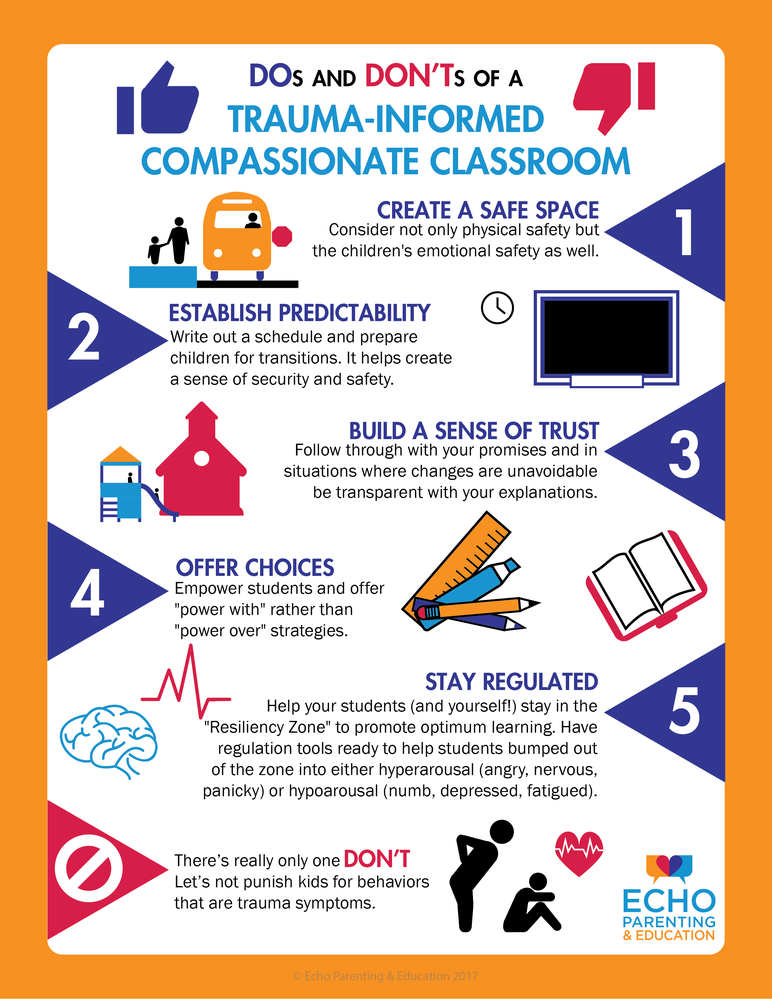When students have experienced trauma, learning comes second to feeling safe. As more kids come to school with trauma and the behaviors that accompany it, teachers are responding. Across the country, from North Carolina to Pennsylvania, teachers are using trauma-informed teaching to support students in new ways.
In many ways, kids have not changed. Many children have experienced traumatic events, and they will bring those events and their feelings and reactions into the classroom. But in other ways, this moment in education is different. Kids are dealing with more traumatic events, and the aftereffects of living through the COVID-19 pandemic are producing more mental health crises in kids.
As a teacher or school leader, it’s important to understand what trauma is and how trauma-informed teaching can help your students.
What is trauma?
Trauma, simply put, is how someone responds emotionally to a negative event. The event could be an accident, a natural disaster, a family problem, or anything that makes them feel unsafe and unstable. It could be a onetime occurrence, like a tornado that damages a town, or an ongoing event, as when a child experiences child abuse. Ongoing trauma, like being abused or experiencing a traumatic event across a long period, creates toxic stress.

Image: Social Work Synergy
One way to think about trauma is thinking about Adverse Childhood Experiences (ACEs). ACEs include experiences like physical or sexual abuse, emotional neglect, exposure to domestic violence, or substance abuse. The research suggests that the more ACEs a child experiences, the greater their risk for immediate and long-term effects on behavior, health, and other outcomes.
In addition to ACEs, other factors like experiencing a natural disaster, structural inequality, and community violence also play a factor in how kids grow up, and they contribute to how they respond to their environment and events. These can also contribute to trauma.
How common is trauma?
Trauma on its own is fairly common in kids. The Department of Veterans Affairs reports that 15% to 43% of girls and 14% to 43% of boys will experience some trauma while growing up. Fortunately, experiencing trauma and developing post-traumatic stress disorder (PTSD) are not the same. Statistics show that 3% to 15% of girls and 4% to 6% of boys will develop PTSD.
What are the impacts of trauma?
When a child experiences a traumatic event, they’ll have a fight-or-flight response. This adrenaline-filled reaction will make them either freeze or react. After a one-time trauma, they may feel shock or denial and have some negative emotions about the event. A child may replay a car accident in their mind, for example, or experience headaches or panic attacks. It may take time for a child to move past even one traumatic event.
According to the National Childhood Traumatic Stress Network, children who experience ongoing trauma may experience difficulties across their lives in a range of areas.
Relationship
- Difficulty with relationships with adults and peers
- Difficulty trusting others
- Difficulty regulating their emotions
Physical Health
- Their brain and nervous system may be impacted
- They may over or under-respond to sensory stimuli, like sounds, smells, touch or light
- They may have chronic complaints, like stomachaches or headaches
- In the long term, they may have more chronic health conditions
Emotional
- Students may externalize or internalize stress and may have depression, anxiety or anger
- They may demonstrate unpredictable or explosive behaviors and reactions, and have difficulty calming down
- They may have difficulty managing emotions
Dissociation
- If a child has become used to dissociating, or distancing themselves mentally from their situation, they may dissociate during stressful situations
Cognition and Learning
- They may have trouble thinking clearly or problem solving
- They may become accustomed to being under stress and won’t be able to think through situations
Self-concept and Future Orientation
- They may demonstrate shame, guilt, low self-esteem or poor self-image
- Their negative thoughts may impact their ability to function at home or school
- They may feel powerless to impact their surroundings or experiences
How does trauma impact students in the classroom?
For children who experience toxic stress, even small interactions between peers or situations that don’t seem “triggering” to you could be a reminder of previous trauma. Kids who have experienced trauma see the world as a dangerous place, so their brains are on high alert and may overreact, resulting in behaviors and shutting down their availability to learn.
How a child behaves in the classroom may be a response to trauma. At school, a child who has experienced trauma may have unpredictable or explosive emotions. They may have out-sized reactions to even small events. Or, they may shut down and become “zoned out.” Any of these behaviors can impact their learning and relationships at school.
Trauma can affect basic learning too. For example, during lessons, students who have experienced trauma may have problems thinking clearly or reasoning. Their brains may be so used to surviving that they aren’t able to maintain focus on learning or taking in new information. Their distraction may impact how they can follow directions or remember what to do from task to task.
In the long run, students who have experienced trauma are at risk for more high-risk behaviors that can also impact their functioning in school.
Read more: 10 Things about Childhood Trauma Every Teacher Needs to Know

What does it mean to be trauma-informed?
The first step to helping students who’ve experienced trauma is being trauma-informed. First and foremost, this means being curious about what a student’s behavior is telling you. What does their behavior tell you about what they’ve experienced? What does it tell you about what they need right now?
Once you’re asking the right questions, being trauma-informed means knowing and applying strategies and techniques to help students calm down, and stay regulated. It means using your knowledge of how the brain responds to build relationships with students, create classroom community, and help students be ready to learn.
If you’d like to learn more and be able to apply your knowledge to support students, check out Starr’s Certified Trauma & Resilience Specialists (CTRS) training. Through this training, you’ll learn about how trauma and toxic stress impact learning, and how resilience can support students’ outcomes. Then, you’ll be able to diagnose behavior and create a culture where students thrive. Learn more and register at the Starr website.
How can educators incorporate trauma-informed teaching?
For students who have experienced trauma, school can be overwhelming. Or, it can be the place where they feel safe and build important skills, like resilience and cognitive flexibility. Being a trauma-informed teacher means starting with classroom culture, and then responding to student behaviors with curiosity and problem solving.
- Focus on building a nurturing, safe classroom environment.
- Add a calming corner with clear procedures for how students access it.
- Build mind-body techniques into daily instruction. Mind body techniques can help a child bring their body into a calmer place, such as yoga sequences, brain breaks and movement breaks.
- Teach cognitive flexibility, or being able to think in different ways and think of different solutions. You can do this by asking questions that ask students to consider how others are feeling. Ask: What did that character think? What were they feeling when they made that decision?
- Build resilience, or the ability to move through a challenging event and have a positive outcome by encouraging students to try new things, and supporting students who need additional help to do this.
- Encourage a growth mindset by pointing out when students’ hard work paid off.
- Teach that mistakes and failures are opportunities for growth and learning. Encourage students to reframe mistakes as opportunities.
- Reframe the conversation. When a child acts out, the knee-jerk reaction may be to ask what’s wrong with them. But, reframing your own questions to focus on what happened and What’s going on with the student? What do you need? Or how can I help?
Read more: When students act out, ask these questions instead
What does a trauma-informed school look and feel like?
When school is a safe place for all kids, students who have experienced trauma build important skills as well. Across a school, being trauma-informed means that, according to SAMHSA, all adults:
- Realize the impact of trauma on students,
- Understand and can recognize trauma symptoms,
- Respond to trauma while keeping students safe, and
- Avoid re-traumatizing a student, or adding to their stress.
Teachers who are trauma-informed create routines and classroom environments that promote safety. They focus on the behaviors we want to see from kids, and use restorative language to address negative behaviors. Educators use a variety of trauma-informed teaching strategies to help students stay regulated and focused, like limited choice and sensory tools. There are calming corners in each classroom to help students who are dys-regulated calm down.
Creating a trauma-informed school takes work and partnering with an organization known for excellence in the field is one way to do it right. Starr Commonwealth offers a Trauma Informed and Resilience Focused accredited school program that provides the coaching, support, and information to school teams so that they can bring successful trauma-informed teaching to their schools.
How does trauma-informed teaching benefit students?
Since 2017, Starr has worked with schools in its Resilience Schools Project to create safe, supportive environments where teachers are trauma-informed and students can thrive. In general, Starr has found that schools that incorporate trauma-informed teaching see improved student social-emotional skills, improved student behavior, greater academic achievement, and improved collaboration between teachers and staff.
Specifically, schools that participated in Starr’s Resilience Schools Project reported:
- A 40% decrease in major referrals.
- A 49% decrease in minor referrals.
- A 58% decrease in suspensions.
- An increase in staff self-reported self-efficacy around supporting students.
- An increase in staff reporting that relationships are foundational for working with students who have experienced trauma.
Resources
Take a Certified Trauma and Resilience Coach Education course through STARR
Read more in The Resilient Schools Project
Read more about how to build resilience in students.
Professional Development Books
Creating Trauma-Informed, Strengths-Based Classrooms by Tom Brunzell
Trauma-Informed School Leadership: Building a Learning Environment to Support Healing and Success by Bill Ziegler et al.
Relationship, Responsibility, and Regulation: Trauma-Invested Practices for Fostering Resilient Learners by Kristen Souers and Pete Hall

